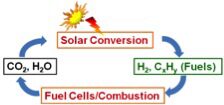Education
- Ph.D. Chemical Engineering, Massachusetts Institute of Technology, 2010
- B.S. Chemical Engineering, Seoul National University,Korea, 2004
Background
Dr. Lee joined the Woodruff School of Mechanical Engineering at Georgia Institute of Technology as an assistant professor in January 2013. Dr. Lee received his Ph.D. in Chemical Engineering at MIT, focusing on designing high-energy and high-power density nanostructured electrodes for electrochemical energy storage, and synthesizing catalysts for electrochemical energy conversion of small molecules such as methanol oxidation and O2 reduction. He conducted his postdoctoral research in designing electrodes for lithium rechargeable batteries and catalysts for solar energy storage in the Department of Mechanical Engineering and the Department of Chemistry at MIT.
Research
- Heat Transfer, Combustion and Energy Systems and Micro and Nano Engineering: Electrochemical energy storage and conversion systems; batteries and supercapacitors; catalysis and fuel cells; CO2 reduction and water-splitting for solar energy storage; electrochemical reaction mechanisms; nanostructured electrodes and electrocatalysts; self-assembly of nano-objects.
Dr. Lee’s research focuses on understanding electrochemical energy conversion and storage mechanisms as well as on designing electrochemical systems that can link renewable energy sources with various end-user applications. The development of these technologies is a critical factor in supporting new transportation technologies, load-leveling for solar and stationary power applications, and fast-evolving portable electronic devices. To respond to these challenges, we will explore the following interconnected research areas.

|
Scheme 1.Ragone plot showing gravimetric energy and power densities of conventional lithium-ion batteries and ECs, and the performance target for plug-in hybrid vehicles (PHEV) and pure electric vehicles (EV). |
Two major electrochemical energy storage technologies are lithium-ion batteries, which can store high energy of ~150 Wh/kg but have relatively low power (<1kW/kg), and electrochemical capacitors (ECs), which have much higher power capabilities (10 kW/kg) but are limited for low energy densities (<10 Wh/kg) (Scheme 1). However, next-generation energy storage applications, such as load-leveling, flexible electronics, and electrified propulsion, require multi-functional energy sources that have high energy and power, long cycle life, compact size, and flexibility, exceeding the performance of conventional lithium-ion batteries and ECs.
To meet these demands, we will focus on developing novel energy storage devices having multi-functionality as well as high performance. We will first design novel redox couple-nanocarbon batteries to reach the performance target region for electric vehicle applications (Scheme 1).To find novel redox couples having high energy density,wewill further explore the energy storage mechanism and reaction kinetics of nanoscale redox couples having multiple oxidation states in relation to their size as well as surface and electronic structure, and synthesize these materials with high redox potential and facile charge transfer. On top of these fundamental studies, we will first increase the capacity of the electrodes by increasing the number of electrochemically accessible functional groups per unit mass or volume of carbons. Next, we will design finely tuned specific functional groups with high redox potentials, and will incorporate these molecules into the conductive carbon matrix to provide both high energy and high power performance with cycling stability.

Scheme 2.Photo-electrocatalytic reactions for carbon-neutral solar-to-fuel conversion.
Electrocatalytic Solar-to-Fuel Energy Conversion
Electrocatalytic solar-to-fuel energy conversion is an attractive way to store solar energy in chemical bonds of fuels. These reactions (Scheme 2) begin with solar energy conversion in the photovoltaic materials, generating holes and electrons. These holes drive water-splitting (oxidation) reaction at the anode. Simultaneously, the photo-generated electrons drive CO2 reduction reaction in water at the cathode, resulting in the production of hydrocarbon and hydrogen fuels. Then, generated fuels are transformed to energy via fuel cells or combustion engines and are converted back to water and CO2, closing the solar-to-fuel energy conversion cycle in a carbon-neutral way. However, the development of this system requires efficient electrocatalysts, which can reduce high overpotential and have selectivity to useful fuels in fuel-forming reactions. Afundamental understanding of the structure and function of the catalytic active site can provide guidance in designing more active, selective and stable catalysts. To understand key design factors, we will study the electrochemical reaction activity, selectivity, and durability of electrocatalysts in correlation with the geometric and electronic structure of catalyst surfaces. From these findings, we will synthesize highly efficient CO2 reduction and water-splitting catalysts from earth-abundant transition metal oxides. Finally, these engineered electrocatalysts for CO2 reduction and water-splitting reactions will be integrated on semiconductor photovoltaic materials to fabricateaphoto-electrocatalytic reactor.
Distinctions and Awards
- Samsung Fellowship, Samsung Foundation of Culture (2005-2010)
- Graduated Seoul National University with Summa cum laude (Class rank: 1/153, 2004)
- Academic Excellence Scholarship, Seoul National University (2004)
- Haesung Fellowship, Haesung Foundation (1998-2003)
Representative Publications
- Seung Woo Lee, Naoaki Yabuuchi, Betar M. Gallant, Shuo Chen, Byeong-Su Kim, Paula T. Hammond, and Yang Shao-Horn, High-Power Lithium Batteries from Functionalized Carbon Nanotube Electrodes. Nature Nanotechnology 5, 531-537, 2010.
- Featured in Technology Review: 1) Nanotubes Give Batteries a Jolt; 2) A Guide to Recent Battery Advances
- Featured in MIT news: Enhancing the power of batteries
- Featured in Science: New Batteries Pack More Punch
- Public News: Contour Energy Systems Licenses MIT Carbon Nanotube Technology for Li-ion Battery Electrodes(Green Car Congress)
- Seung Woo Lee, Shuo Chen, Wenchao Sheng, Naoaki Yabuuchi, Yong-Tae Kim, Tadaoki Mitani, Elio Vescovo, and Yang Shao-Horn, Roles of Surface Steps on Pt Nanoparticles in Electro-Oxidation of Carbon Monoxide and Methanol. Journal of the American Chemical Society 131, 15669–15677, 2009.
- Featured in MIT news: Fuel cells get a boost
- Public News: Fuel Cell Progress – A Better Way to Burn (New Energy and Fuel)
- Seung Woo Lee, Byeong-Su Kim, Shuo Chen, Yang Shao-Horn, and Paula T. Hammond, Layer-by-Layer Assembly of All Carbon Nanotube Ultrathin Films for Electrochemical Applications. Journal of the American Chemical Society 131, 671–679, 2009. Feature in Technology Review: Nanotube Superbatteries
- Seung Woo Lee, Christopher Carlton, Marcel Risch, Yogesh Surendranath, Shuo Chen, Sho Furutsuki, Atsuo Yamada, Daniel G. Nocera, and Yang Shao–Horn, The Nature of Lithium-Battery Materials under Oxygen Evolution Reaction Conditions, Journal of the American Chemical Society 134, 16959-16962, 2012.
- Seung Woo Lee, Betar M. Gallant, Youngmin Lee, Noboru Yoshida, Dong Young Kim, Yuki Yamada, Suguru Noda, Atsuo Yamada, and Yang Shao-Horn, Self-standing positive electrodes of oxidized few-walled carbon nanotubes for light-weight and high-power lithium batteries. Energy & Environmental Science5, 5437-5444, 2012.
- Md Nasim Hyder, Seung Woo Lee, Fevzi Ç. Cebeci, Daniel J. Schmidt, Yang Shao-Horn, and Paula T. Hammond, Layer-by-Layer Assembled Polyaniline Nanofiber/Multiwall Carbon Nanotube Thin Film Electrodes for High-Power and -Energy Storage Applications. ACS Nano 5, 8552-8561, 2011.
- Seung Woo Lee, Betar M. Gallant, Hye Ryung Byon, Paula T. Hammond, and Yang Shao-Horn, Nanostructured Carbon-Based Electrodes: Bridging the Gap between Thin-Film Lithium-ion Batteries and Electrochemical Capacitors. Perspective, Energy & Environmental Science 4, 1972-1985, 2011. Selected as high-impact battery research by Development Editor (30 May 2012)
- Seung Woo Lee, Junhyung Kim, Shuo Chen, Paula T. Hammond, and Yang Shao-Horn, Carbon Nanotube/Manganese Oxide Ultrathin Film Electrodes for Electrochemical Capacitors, ACS Nano 4, 3889-3896, 2010.
- Seung Woo Lee, Shuo Chen, Jin Suntivich, Kotaro Sasaki, Radoslav R. Adzic, and Yang Shao-Horn, Role of Surface Steps of Pt Nanoparticles on the Electrochemical Activity for Oxygen Reduction, The Journal of Physical Chemistry Letters 1, 1316-1320, 2010.
Patents
- Layer-by-Layer Assemblies of Carbon-based Nanostructures and Their Applications in Energy Storage and Generation Devices, Filed 08/14/2009, U.S. Patent App. 12/541,305, International Patent App. PCT/US2009/004682, with Y. Shao-Horn, N. Yabuuchi and P. T. Hammond.
- Carbon Electrodes, Filed 10/11/2011, U.S. Patent App. 13/270,553, International Patent App. PCT/US2012/059692, with H. Byon, B. M. Gallant, Y. Shao-Horn, P. T. Hammond and N. Hyder.

